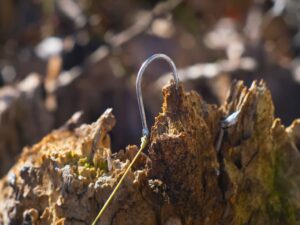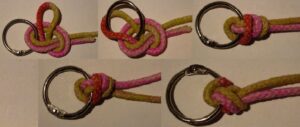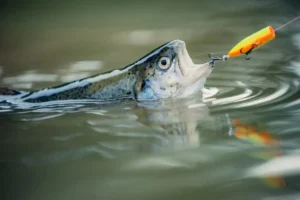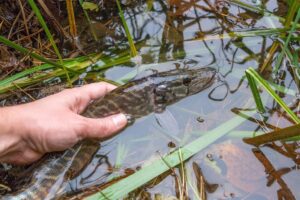Mastering The Art Of Fishing Crankbaits: A Comprehensive Guide On How To Fish Crankbaits Successfully
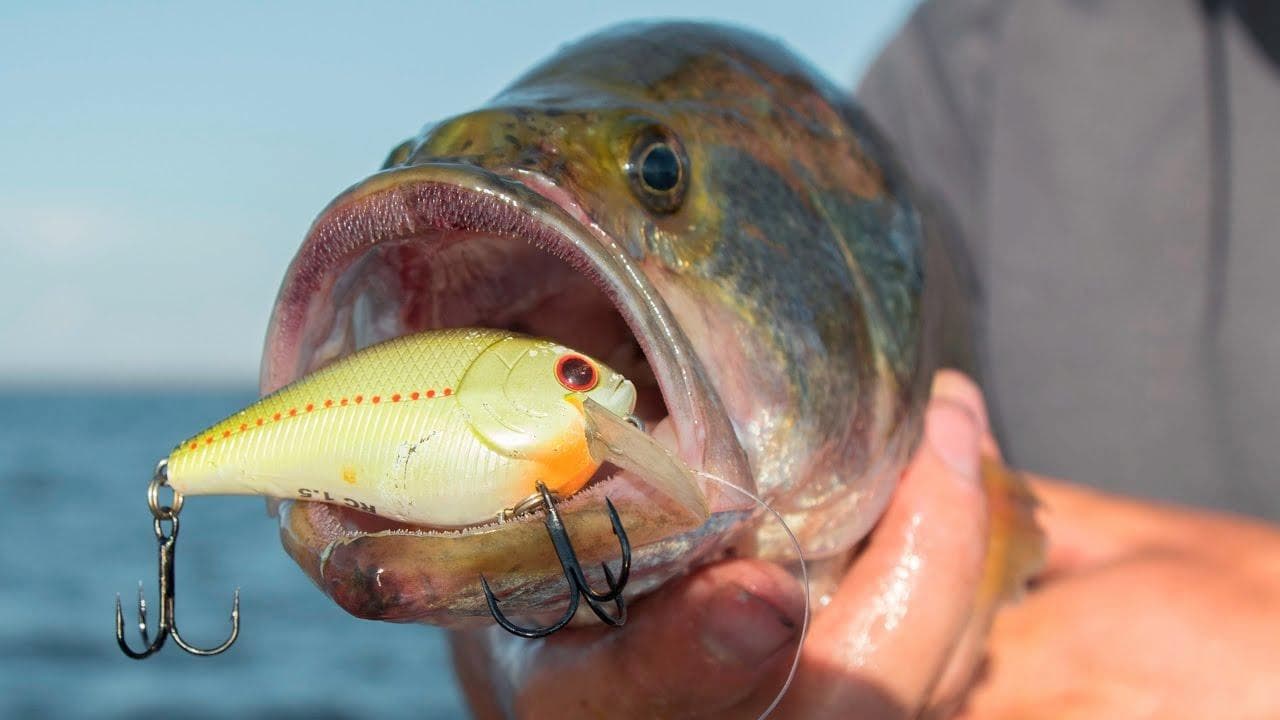
Are you struggling to land that big catch despite using crankbaits? Crankbait fishing is a powerful method, known for tricking predatory fish like largemouth bass and pike.
This guide will equip you with essential tips on choosing the right crankbaits and mastering animation techniques to improve your success rate.

Key Takeaways
- To fish well with crankbaits, use different moves like straight pulling, making fast turns, tapping the bottom, and stopping then going.
- Pick crankbaits based on what fish you want to catch – shallow ones for perch and deep divers for pike.
- Crankbait fishing is better when you have a rod that’s medium – heavy and long enough to cast far. Your reel should let you pull in line quickly.
- Change how fast you bring back your lure and try out various colours to see what works best. Use methods like pausing or hitting the bottom to get more bites.
- Keep practicing. The more you try different ways with your crankbaits, the more likely you are to catch big fish!
The Art of Fishing Crankbaits
Fishing crankbaits is an art that requires skill and finesse, and they are popular and effective for targeting predatory fish. There are different methods of animating the crankbait to entice the fish into striking.
Popular and effective for targeting predatory fish
Crankbaits shine when you’re after hunters like pike, perch, and black bass. These fake fish trick the real ones into biting. They swim just right to grab a predator’s eye, and those sharp treble hooks make sure they stay on your line once they strike.
Cast out a crankbait and reel it in; watch as big fish that love to chase can’t resist the urge to attack. This technique lets you cover lots of water fast. It’s all about finding where the hungry fish hide and getting them to bite.
Different methods of animating the crankbait
Fishing with crankbaits means making them move in ways that look like real baitfish. This can trick fish into biting. Here are some different methods:
- Linear retrieval: You cast out your line and reel it straight back in. This simple way makes the lure swim evenly through the water. It’s good when fish are active and chasing after food.
- Cranking: Turn your reel handle quickly to make the crankbait dive deep and move fast. Predatory fish often hit these moving targets hard, thinking they’re escaping prey.
- Bottom tapping: Cast your lure and let it sink to the bottom. Then, you lightly jerk your rod so your crankbait touches the bottom like a feeding baitfish would do. This action can catch the eye of fish like bass or walleyes.
- Stop and go: Reel in for a bit, then stop suddenly to let the crankbait float up or suspend. Start reeling again after a short pause. Fish sometimes bite when the lure starts moving again because it seems like an easy meal.
Choosing the Right Crankbaits
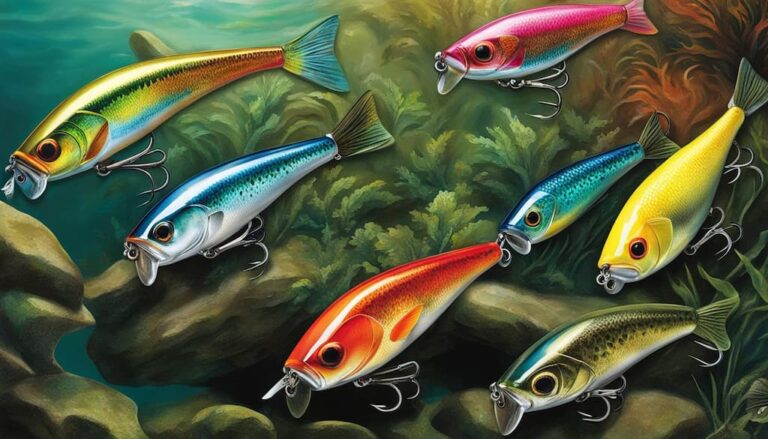
When choosing the right crankbaits, consider the type of fish you want to target and the fishing conditions. Different models are suitable for specific types of fish, with varying swimming depths and actions.
It’s important to select the appropriate crankbait that matches your fishing goals for a successful angling experience.
Depends on the type of fish being targeted and the fishing conditions
Picking the right crankbaits is key to catching fish. If you go after perch, choose shallow-running lures in natural colors. These match what perch eat and make them bite. For pike, bigger lures that dive deep work best because pike like to swim lower and hunt for big meals.
Your fishing spot’s water depth and clarity can change which crankbait you should use. In clear water, bass often hit lures that look like real fish or bugs they know. But if the water is murky, loud colors or rattling sounds from a lipless crankbait might get their attention better.
Always think about these things before picking your lure to get more bites on your line.
Different models suitable for specific types of fish and swimming at different depths
Crankbaits are like keys; they unlock the bites from fish. The right model can lure in your target catch.
Proper Equipment for Crankbait Fishing
To successfully fish with crankbaits, you need the right equipment. This includes a specific rod and appropriate reel that match the characteristics of your crankbait for an optimised fishing experience.
Specific rod and appropriate reel necessary
You’ll need a special rod and reel for crankbait fishing. Choose a medium-heavy rod that can cast your crankbait far out. Look for one that’s long enough to handle the casting distance you want.
Your reel should match the rod, and it must be able to hold enough monofilament or fluorocarbon line. This setup helps you feel the action of your lure and pull in those tough fish.
The right gear makes all the difference with crankbaits. Get a reel with a good drag system so you don’t lose fish after they bite. A fast retrieval speed will help too when you need to keep up with speedy predators.
Make sure your tackle box has various options so you’re ready for any situation on the water.
Characteristics to optimise the fishing experience
- A medium – heavy fishing rod is ideal for casting crankbaits far and feeling the lure’s action.
- Rods with a bit of flex at the tip help you hook fish better when they strike your crankbait.
- Look for reels that can handle lots of monofilament or fluorocarbon line. These types of lines stretch a little and keep your crankbait moving naturally.
- Reels with smooth drag systems allow you to fight big fish without breaking the line.
- Choose a reel that lets you reel in line quickly. This way, you can keep up with speedy fish or quickly bring in your lure for another cast.
- Pick monofilament or fluorocarbon lines that are strong enough to pull lures through water and weeds but thin enough not to scare fish.
- Line strength should match the size of fish you’re after. Heavy lines for big fish like pike, and lighter ones for smaller bass or perch.
Techniques for Animating Crankbaits
Experiment with different animation techniques such as linear retrieval, cranking, bottom tapping, and stop and go to adapt to various fishing conditions. Each technique has its own advantages for attracting predatory fish.
Linear retrieval, cranking, bottom tapping, and stop and go
Fishing crankbaits can bring you lots of fun and success. You need to use the right ways to move your crankbait in the water to catch fish.
- With linear retrieval, you cast your fishing line out and reel it in straight. This simple way makes the crankbait swim steady and look like a real fish moving in the water.
- Cranking means turning the reel handle fast or slow. Speeding up or slowing down changes how the bait moves and can make it more interesting to fish.
- Bottom tapping is when you let the crankbait hit the lake or river bed as you reel it in. This stirs up mud and looks like food for fish, which can get them to bite.
- Stop and go is a fun way to trick fish. You reel in a bit, then stop, giving the bait a chance to float up before reeling again. It makes it seem like an injured fish, which predators love.
Advantages for different fishing conditions
Mastering the art of fishing crankbaits involves understanding the advantages of different animation techniques for various fishing conditions. Linear retrieval is ideal for open water, enabling you to cover a lot of ground quickly and locate active fish.
When it comes to shallow areas with vegetation or cover, cranking is the way to go, as it allows the diving crankbait to be retrieved without getting snagged. Bottom tapping becomes advantageous when targeting fish in deeper water or around structures, effectively mimicking a baitfish feeding near the bottom.
Lastly, stop and go works well in colder waters, enticing reluctant or lethargic fish by allowing the crankbait to pause intermittently.
Adapting Crankbait Choices Based on Targeted Fish

Choose the right crankbait model depending on the depth and size of bass for bass fishing. Use shallow and natural colours while targeting perch, and opt for larger and deeper diving models when going after pike.
Shallow and natural colours for perch
Select shallow diving models with natural colors for successful perch fishing. The natural color crankbaits are ideal for targeting perch, and they should have a shallow diving capability.
Using these specific types of crankbaits is essential to entice and catch perch effectively. When choosing your crankbait for perch, consider the depth it can reach and opt for shades that mimic the natural prey of perch.
Additionally, using this technique will increase your chances of success when fishing for perch.
Larger and deeper diving models for pike
When targeting pike, larger and deeper diving crankbaits are the way to go. These models closely imitate the natural prey of pike, such as whitefish or catfish. Bright colors combined with varied retrieval techniques can effectively trigger aggressive attacks from pike, making these crankbaits a crucial part of your fishing arsenal to reel in this predatory fish.
Choice of models depending on the depth and size of bass for bass fishing
When targeting bass, it’s crucial to choose the right crankbait models that match the depth and size of the bass you’re aiming for. Opt for deeper diving crankbaits when targeting larger and deeper bass, while smaller and shallower diving models work best for smaller or more surface-oriented bass.
Consider the characteristics of the fishing area as well – such as rocky bottoms or weedy areas – when selecting your crankbait model. Adapting your choice based on these factors can significantly improve your success in catching bass.
Remember, fish can react differently to colours and movements of lures. So, be sure to experiment with different types of crankbaits until you find what works best for the specific conditions you’re fishing in.
Tips for Successful Crankbait Fishing
Vary your retrieval speed and experiment with different colours to find what works best in varying conditions. Use different animation techniques such as stop and go or bottom tapping to entice more fish.
Practice and patience
To become a master at fishing crankbaits, practice and patience are crucial. It takes time to perfect the varying retrieval speed and experimenting with different colors. Using intense vibrating crankbaits and trying diverse animation techniques also demand practice to master.
In the journey of mastering crankbait fishing, remember that practice makes perfect.
Varying retrieval speed, experimenting with colours, and using different animation techniques
To improve your crankbait fishing success, consider varying your retrieval speed, experimenting with different colours, and using various animation techniques. These methods can help attract fish and increase the likelihood of triggering attacks. Here are some tips to implement these strategies effectively:
Varying Retrieval Speed:
- Adjusting the speed at which you retrieve the crankbait can create different actions that appeal to predatory fish.
- Slower retrieval speeds can mimic injured prey, while faster speeds can create an erratic and attention-grabbing movement.
Experimenting with Colours:
- Different water conditions may require different coloured crankbaits to stand out effectively.
- Brighter colours work well in murky or stained water, while natural or more subtle hues are suitable for clearer waters.
Using Different Animation Techniques:
- Incorporate techniques such as the stop-and-go method, where you intermittently pause during retrieval to simulate a struggling baitfish.
- Bottom tapping can imitate a crayfish or baitfish foraging along the riverbed, attracting the attention of nearby predators,
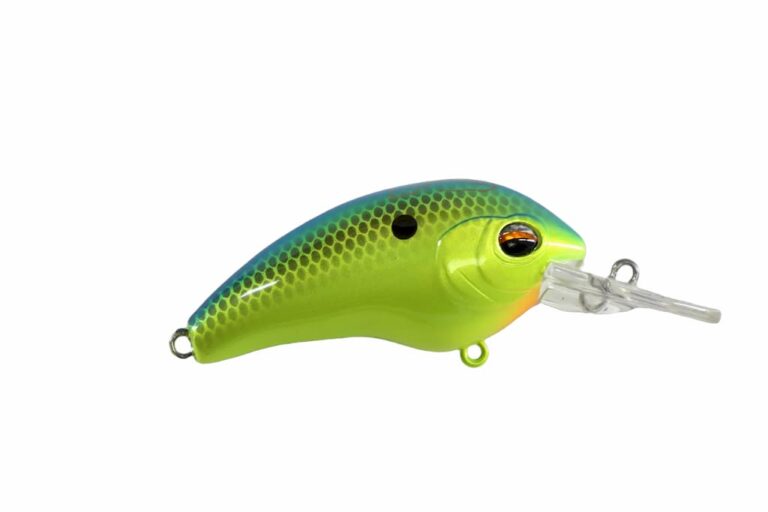
Conclusion
Mastering the art of fishing crankbaits requires patience and practice. Varying retrieval speed, experimenting with colors, and using different animation techniques are crucial for success.
Remember to adapt your crankbait choices based on the targeted fish and fishing conditions. Armed with the right knowledge and equipment, you’re now ready to confidently tackle the waters and reel in those predatory fish!

